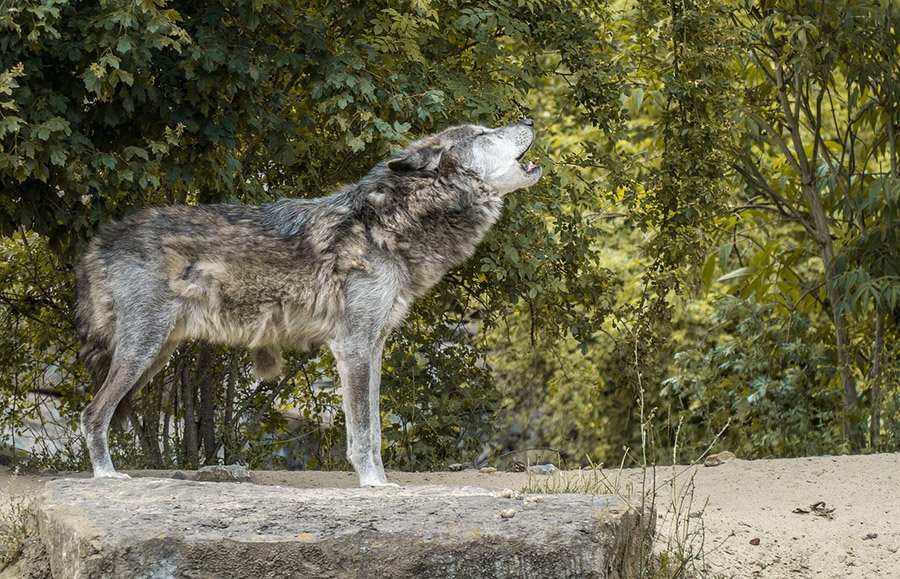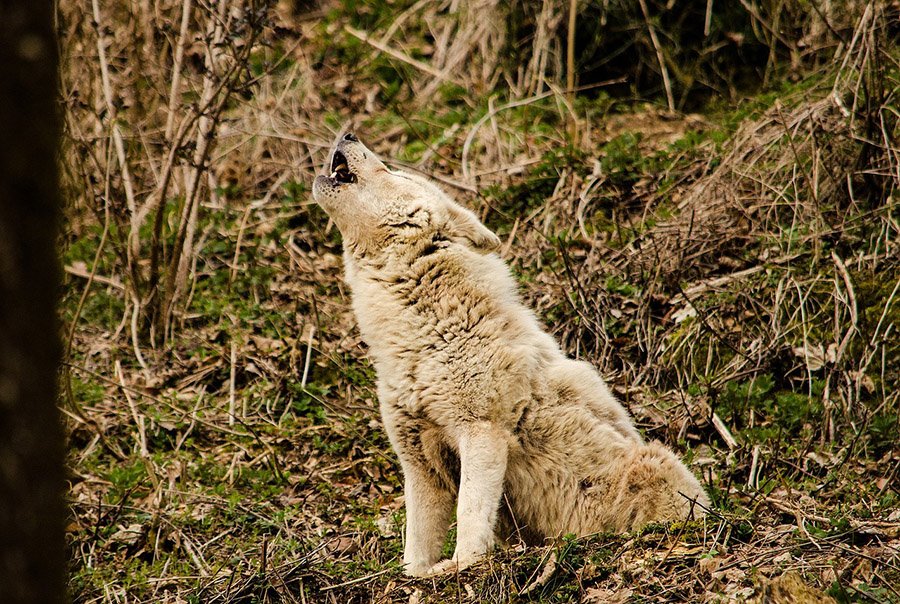Wolves, with their enigmatic presence and captivating howls, have long captured human imagination. As social animals with complex hierarchical structures, communication plays a pivotal role in maintaining order, cohesion, and coordination within a wolf pack.
The rich variety of sounds they produce is crucial for expressing emotions, signaling danger, and even organizing hunting expeditions. Among the plethora of sounds in their vocal repertoire, the question of whether wolves bark like their domesticated counterparts, dogs, often arises.
This article seeks to delve into the world of wolf vocalizations, aiming to unravel the mysteries of their communication and explore the extent to which wolves use barking as a form of expression.
The Language of Wolves – An Overview
The vocalizations of wolves are varied and multifaceted, serving different functions in the complex tapestry of their social lives. Predominantly known for their iconic howls, which can travel for miles, wolves utilize this vocalization for a myriad of reasons. Howling helps in rallying pack members, defining territory boundaries, and communicating with other packs.
Beyond howls, wolves also growl, whimper, and produce a range of other sounds. Growls are typically associated with aggression or threats, serving as a warning to rivals or a means of establishing dominance within the pack.
Whimpers and softer vocalizations, on the other hand, are often used in the context of social interactions, especially between pups and their parents.
Barking, while not as common as in domestic dogs, does occur in the wolf’s world. However, the context, frequency, and purpose of this behavior can differ significantly from that observed in our canine companions.

Do Wolves Bark?
While it might not be their most common form of vocalization, wolves do indeed bark. However, the contexts in which wolves bark are quite specific and differ significantly from the barking behavior of domestic dogs.
Wolves typically bark when they are startled or feel threatened, using the sound as an alarm call to alert other pack members of potential danger. The barking of a wolf is usually brief and is often accompanied by a growl.
Compared to the varied and communicative barking of domestic dogs, the barking of a wolf is more monotonous and has a harsher quality. It serves more as a warning or threat, rather than a means of communication over longer distances or a way to express a wide range of emotions and needs, as seen in dogs.
The frequency of barking in wolves is also much lower than in domestic dogs. While dogs have been bred over thousands of years to live alongside humans and have developed a vast repertoire of barks for different situations, wolves remain wild animals, and barking is not a primary means of communication for them.
Comparing Wolf and Dog Vocalizations
The vocalizations of wolves and dogs share a common ancestry, but domestication has led to significant differences in how these two canids communicate.
Wolves, with their wild instincts and social structures, rely more on howls, growls, and body language for communication, reserving barks mostly for situations of surprise or threat.
Dogs, on the other hand, have evolved alongside humans to become incredibly adept at using barks to communicate not just with each other but also with us. The tone, pitch, and frequency of a dog’s bark can vary widely, providing cues about their emotional state, and needs, or alerting to specific situations.
This diversity in barking behavior is a direct result of the domestication process, where dogs have been selectively bred for certain traits, including their ability to communicate with humans.
In essence, while wolves do bark, the behavior is much less complex and less frequently observed than in domestic dogs. The evolutionary journey of wolves and dogs has led them down different paths of vocalization, highlighting the profound impact of domestication on animal behavior and communication.

How Important is Barking for Wolves?
Barking plays a much less prominent role in wolf communication compared to other vocalizations and forms of non-vocal communication. While barking does occur, it is generally short-lived and used in specific contexts, such as when a wolf is startled or feels threatened.
Wolves have a complex communication system that includes various vocalizations, body language, and scent markings. They howl to assemble the pack, communicate across long distances, and establish territory.
Growls and snarls are used to express aggression or dominance, often during disputes over food or hierarchy within the pack. Whimpers and whines can indicate submission, affection, or a desire for attention.
Without relying heavily on barking, wolves coordinate hunting strategies, defend their territory, and maintain social bonds through these diverse communication methods.
Their ability to convey nuanced messages through a combination of sounds, body postures, and scents showcases the complexity of their social structures and the sophistication of their communicative abilities.

The Impact of Human Perception and Media
Popular media and myths have long portrayed wolves in a variety of ways, from the big bad wolf in fairy tales to the noble and mysterious creatures in more recent films and literature. These portrayals can significantly influence public perception of wolves and their behavior, sometimes leading to misconceptions and misunderstandings.
Barking is a behavior that is commonly associated with dogs, and because of the close relationship between dogs and humans, there can be a tendency to anthropomorphize or apply dog-like characteristics to wolves. However, wolves are wild animals with behaviors and communication strategies that are adapted to their natural environments and social structures, not domestic settings.
Promoting a more accurate and nuanced understanding of wolf behavior, including their vocalizations, is crucial for both the conservation of wolf populations and the safety of human communities living near wolf habitats.
Misconceptions can lead to unnecessary fear or antagonism towards wolves, hindering conservation efforts and jeopardizing the delicate balance between humans and wildlife.
Frequently Asked Questions
Do wolves bark like dogs?
While wolves are capable of barking, the behavior is much less common and less varied than in domestic dogs. Wolves typically bark in short bursts as an alarm call or to express agitation.
How do wolves communicate if not through barking?
Wolves have a rich repertoire of vocalizations, including howls, growls, and whines, which they use alongside body language and scent marking to communicate.
Can humans understand wolf vocalizations?
While researchers have made significant progress in interpreting wolf vocalizations, the complexity of their communication system means that it is challenging to fully understand every nuance of their interactions.
Are wolves dangerous to humans?
While wolves are wild animals and should be treated with respect and caution, attacks on humans are extremely rare. Misunderstandings and myths about wolf behavior can contribute to unnecessary fear and conflict.





